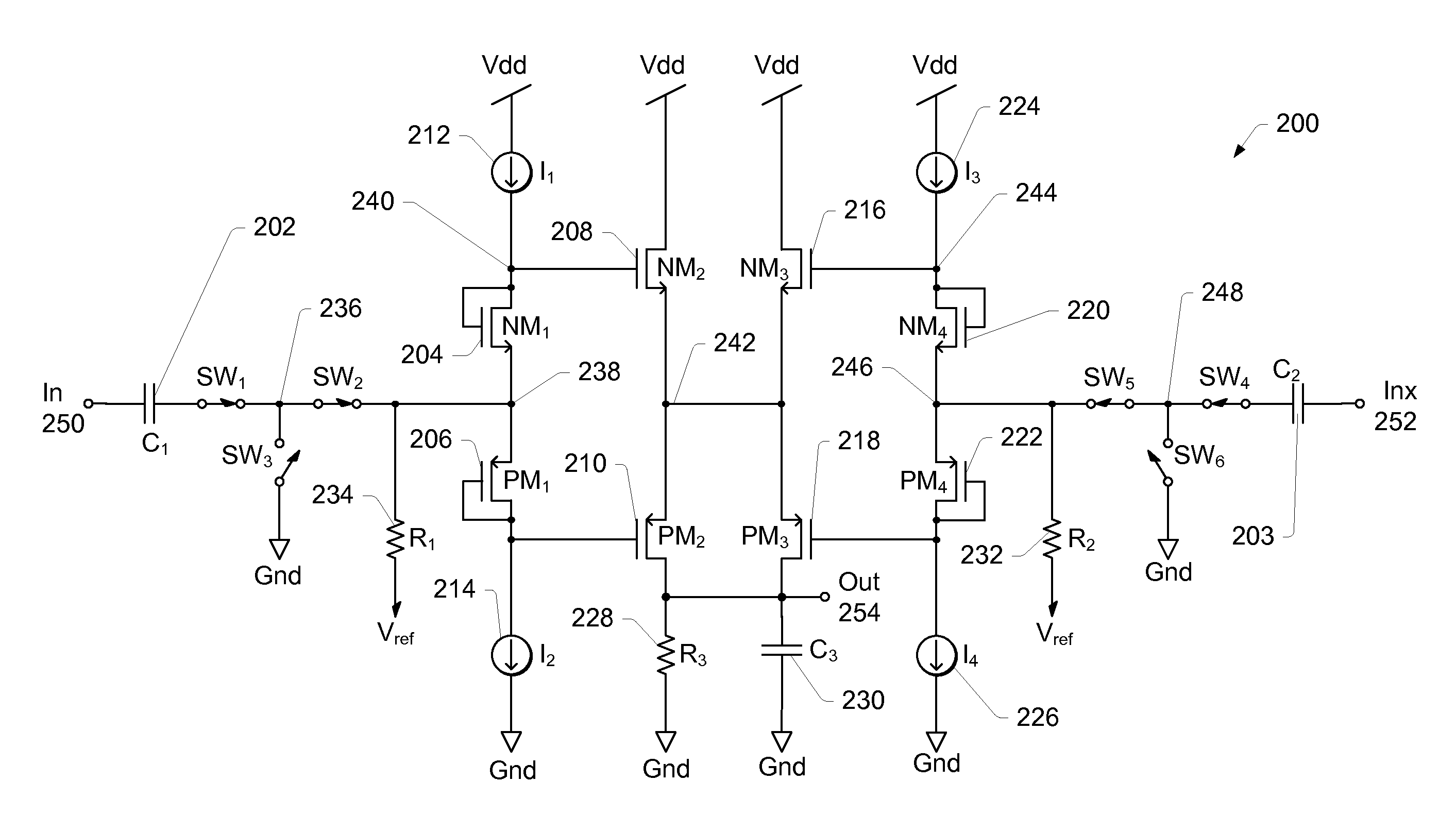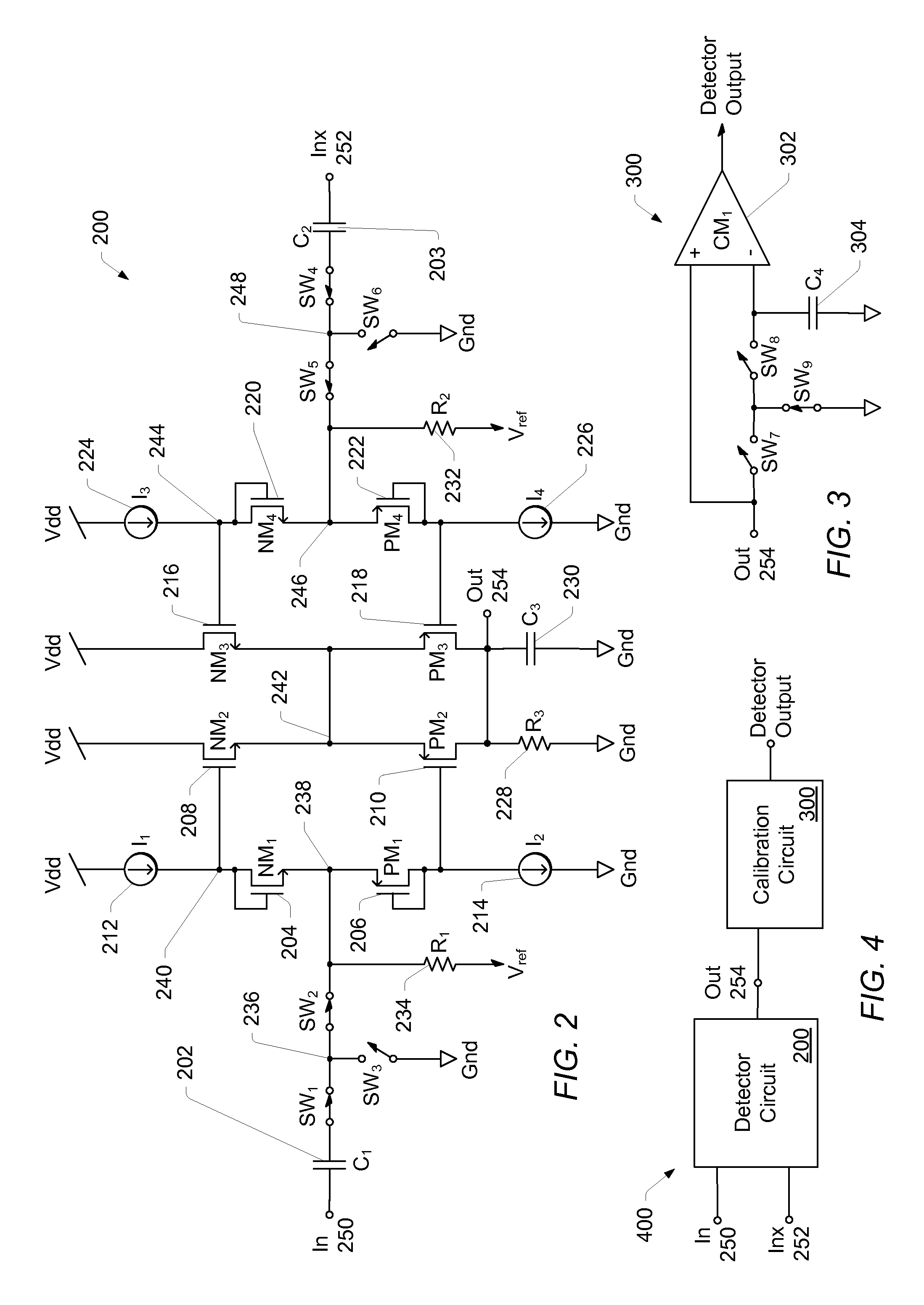Symmetrical Electrical Physical Layer Activity Detector
a detector and electrical physical layer technology, applied in the field of analog circuit design, to achieve the effect of excellent common mode rejection
- Summary
- Abstract
- Description
- Claims
- Application Information
AI Technical Summary
Benefits of technology
Problems solved by technology
Method used
Image
Examples
Embodiment Construction
As used herein, “structure type” refers to the physical structure of an individual resistive element, or resistor implemented on an integrated circuit for a given process. For example, for a given CMOS process a resistor may be implemented to be of one of a variety of structure types, which may include n-diffusion, p-diffusion, n-well, p-well, pinched n-well, pinched p-well, poly-silicon and metal. When configured on an integrated circuit, a single “resistance” may be constructed as a single resistor or as two or more resistors connected together, where each individual resistor may be of a different structure type. When constructed of more than one resistor, the nominal value of the resistance may be equivalent to the sum of the nominal values of the resistors that make up the resistance. A “resistor string” refers to resistances connected in series, with connective taps available at the terminals of the resistances. Similarly, a “capacitance” may be constructed as a single capacito...
PUM
 Login to View More
Login to View More Abstract
Description
Claims
Application Information
 Login to View More
Login to View More - R&D
- Intellectual Property
- Life Sciences
- Materials
- Tech Scout
- Unparalleled Data Quality
- Higher Quality Content
- 60% Fewer Hallucinations
Browse by: Latest US Patents, China's latest patents, Technical Efficacy Thesaurus, Application Domain, Technology Topic, Popular Technical Reports.
© 2025 PatSnap. All rights reserved.Legal|Privacy policy|Modern Slavery Act Transparency Statement|Sitemap|About US| Contact US: help@patsnap.com



